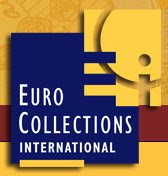
Niue 2010 $1 Balloon Silver Proof
The hot air balloon is the oldest successful human-carrying flight technology and it was on Nov 21, 1783, in Paris, France, that the first untethered manned flight was made by Jean-François Pilâtre de Rozier and François Laurent d'Arlandes. The balloon they rode that day was created by Joseph-Michel Montgolfier and Jacques-Étienne Montgolfier. For their acheivement their father Pierre was elevated to the nobility and the hereditary appellation of de Montgolfier by King Louis XVI of France.
From Wikipedia:
Unmanned hot air balloons are popular in Chinese history. Zhuge Liang of the Shu Han kingdom, in the Three Kingdoms era (220–80 AD) used airborne lanterns for military signaling. These lanterns are known as Kongming lanterns. There is also some speculation, from a demonstration led by British modern hot air balloonist Julian Nott in the late 1970s and again in 2003, that hot air balloons could have been used by people of the Nazca culture of Peru some 1500 to 2000 years ago, as a tool for designing the famous Nazca ground figures and lines. The first documented balloon flight in Europe was demonstrated by Bartolomeu de Gusmão. On August 8, 1709, in Lisbon, he managed to lift a balloon full of hot air about 4.5 meters in front of King John V and the Portuguese court.
The first clearly recorded instance of a balloon carrying passengers used hot air to generate buoyancy and was built by the brothers Joseph-Michel and Jacques-Etienne Montgolfier in Annonay, France. After experimenting with unmanned balloons and flights with animals, the first tethered balloon flight with humans on board took place on October 15, 1783. It is fitting that Etienne Montgolfier was the first human to lift off the earth, making at least one tethered flight from the yard of the Reveillon workshop in the Faubourg Saint-Antoine. It was most likely on October 15, 1783. A little while later on that same day, Pilatre de Rozier became the second to ascend into the air, to an altitude of 80 feet, which was the length of the tether. The first free flight with human passengers took place on November 21, 1783. King Louis XVI had originally decreed that condemned criminals would be the first pilots, but de Rozier, along with Marquis François d'Arlandes, successfully petitioned for the honor. The first military use of a hot air balloon happened during the battle of Fleurus where the French used the balloon l'Entreprenant as an observation post.
Featured on the reverse of this unique, rectangular-shapped silver coin, is a depiction of the first ever manned, untethered flight in a hot air balloon, over the fields of Paris. In the foreground are the portraits of the Montgolfier Brothers, with their name inscribed between them. The obverse carries the common design for the "How Man Conquered The Skies" silver coin series; a collection of various modes of flight together with the effigy of Queen Elizabeth II. Inscribed on this side is the name of the series, the country and year of issue and coin denomination. Each coin is struck from 28.28 grams of 92.5% sterling silver on a rectangular, 28mm x 40mm flan to the Mint of Poland strict Proof quality standards.
Each coin is accompanied by an official Certificate of Authenticity confirming the exclusive world-wide mintage of just 6000 silver coins struck.













